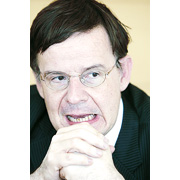Rationing system in N. Korea
It was reported recently, that ― obviously, following a reformist drive, the North Korean leaders decided to scale down the rationing system. In order to understand the significance of this change, we must keep in mind that for a few decades North Korea was a society where rationing was taken to a logical extreme.
From 1957, it became illegal to buy grain privately. As a result, rice and corn ― major sources of calories in the North Korean diet ― could be obtained only by those with ration coupons.
By the late 1960s, free trade in North Korea had all but disappeared. Pretty much anything of value was distributed by the state from then on. In this society, money had little meaning since even a shed-load of cash would not buy much without the requite ration coupons.
The distribution of grain, cooking oil, soya sauce and other basic food stuffs has been dealt with extensively. But what of other things, how could a North Korean living under the wise and energetic guidance of “The Great Leader” obtain a suit, a TV set or a bra ― yes, North Korean women wear them.
To simplify things a bit, there were two channels for the distribution of consumption goods. First, they could be given as “presents of The Great Leader,” or second, they could be distributed through the local level distribution system that dealt with their supply. Third, they could be bought freely.
Let’s start with the last option, the list of items available freely in North Korea of the 1970s and 1980s was short, or though it varied according to region and year/season. Normally coupons were not required for stationary, toys, books or some basic snacks. In some parts of the country, one could buy freely, locally produced food, especially these particular varieties of fruits or vegetables were locally abundant. But, as a rule, pretty much everything edible had to be given by the state.
The most prestigious items were presented to North Koreans as gifts from Kim ill-sung. This might sound pompous, but most of these gifts were quite simple, soldiers in a military unit were given oranges for example, and on his birthday, children would be given cookies and sweets. The most prestigious items though, were also distributed in the same way, officials and high level military were given watches, TV sets, fridges and record players, among other things, as gifts of The Great Leader.
It was implied that Generalissimo (from 1992) Kim Il Sung, in his magnanimousness, was taking care of a particular North Korean, providing her with something as a token of his love. It was not only rationing, but also a shrewd propaganda move.
But the majority of consumption goods were not distributed as presents, nor were they freely available. They were instead sold to those who could produce the required ration coupons. For such things as socks or glass jars though, there was no nationwide rationing, rather the distribution norms were decided upon by the local authorities on an ad hoc basis.
Imagine a particular town in North Korea in the 1980s received 125 TV sets, the department of trade in the city administration would first put aside some of them for sale to those who have special standing or who happen to be relatives of the powerful and influential. Let’s assume that after such backdoor distribution, 95 TV sets are left over. The administration would then issue ration coupons which would then be distributed to the population.
In some cases, coupons were given at the place of one’s employment, but most of them to the so-called “People’s groups.” The People’s groups include 20-40 families living in one neighborhood. Each People’s group had (and still usually has) a middle-aged woman with reasonably good political background who is the lowest cog in North Korea’s surveillance and administration system. In our hypothetical case, assuming that the town is not too large, more or less every people’s group would be issued one ticket for a TV set.
Then it was up to the leader of the ‘People’s group’ and in some cases other members as well, to decide who this ticket should be given to. If we are talking about items which appeared regularly ― like socks, kimchi jars or radio sets, the People’s group might have a waiting list. The distribution of rarer items could be a rather more troublesome business though.
Last, but not least, those lucky few who had access to foreign currency, could buy pretty much everything they wanted at specialized hard currency shops, where buyers had to pay for what they wanted in U.S. dollars or Japanese yen (Chinese Yuan was taken for serious money until around 1990). But such people were quite uncommon.
But nowadays this has all but disappeared. By the mid-1990s, this elaborate distribution system ceased to function, though it was never formally abolished. Today, North Koreans shop freely and buy what they want ― as long as they have the money to pay. <The Korea Times/Andrei Lankov>



